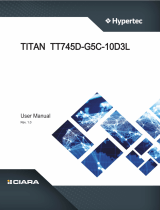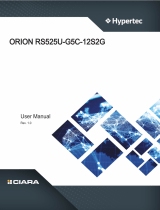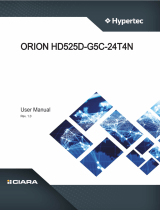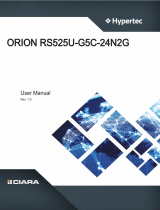
- 8 -
3-8 Installing the Hard Disk Drive ......................................................................... 39
3-8-1 R182-Z90 ................................................................................................................39
3-8-2 R182-Z91 / R182-Z92 .............................................................................................41
3-9 Installing the M.2 Device and Heat Sink ........................................................ 42
3-10 Replacing the Fan Assembly .......................................................................... 43
3-11 Replacing the Power Supply .......................................................................... 44
3-12 Cable Routing ................................................................................................ 45
3-12-1 Cable Routing for R182-Z90 ...................................................................................45
3-12-2 Cable Routing for R182-Z91 ...................................................................................48
3-12-3 Cable Routing for R182-Z92 ...................................................................................51
Chapter 4 Motherboard Components ...........................................................................57
4-1 Motherboard Components ............................................................................. 57
4-2 Jumper Setting .............................................................................................. 59
Chapter 5 BIOS Setup ..................................................................................................61
5-1 The Main Menu .............................................................................................. 63
5-2 Advanced Menu ............................................................................................. 65
5-2-1 Trusted Computing .................................................................................................67
5-2-2 PSP Firmware Versions ..........................................................................................68
5-2-3 Legacy Video Select ...............................................................................................69
5-2-4 AST2500 Super IO Conguration ...........................................................................70
5-2-5 S5 RTC Wake Settings ...........................................................................................73
5-2-6 Serial Port Console Redirection .............................................................................74
5-2-7 CPU Conguration ..................................................................................................78
5-2-8 PCI Subsystem Settings .........................................................................................79
5-2-9 USB Conguration ..................................................................................................81
5-2-10 Network Stack Conguration ..................................................................................83
5-2-11 NVMe Conguration ...............................................................................................84
5-2-12 SATA Conguration.................................................................................................85
5-2-13 UEFI POST LOGO Conguration ...........................................................................86
5-2-14 AMI Graphic Output Protocol Policy .......................................................................87
5-2-15 Tls Auth Conguration ............................................................................................88
5-2-16 iSCSI Conguration ................................................................................................89
5-2-17 Intel(R) I350 Gigabit Network Connection ............................................................90
5-2-18 VLAN Conguration ................................................................................................92
5-2-19 MAC IPv4 Network Conguration ...........................................................................93
5-2-20 MAC IPv6 Network Conguration ...........................................................................94
5-3 AMD CBS Menu ............................................................................................. 95
5-3-1 CPU Common Options ...........................................................................................96
5-3-2 DF Common Options ............................................................................................101

























